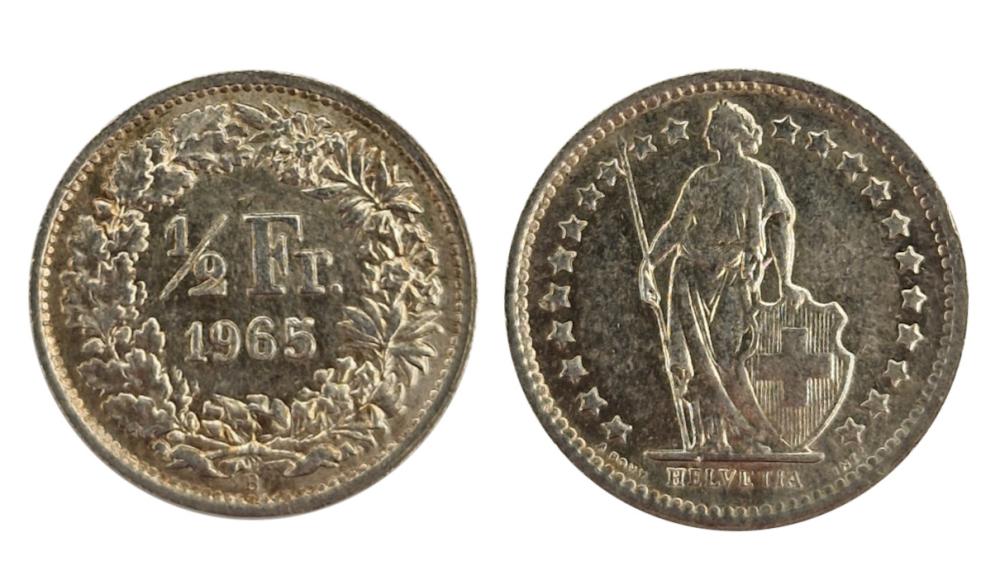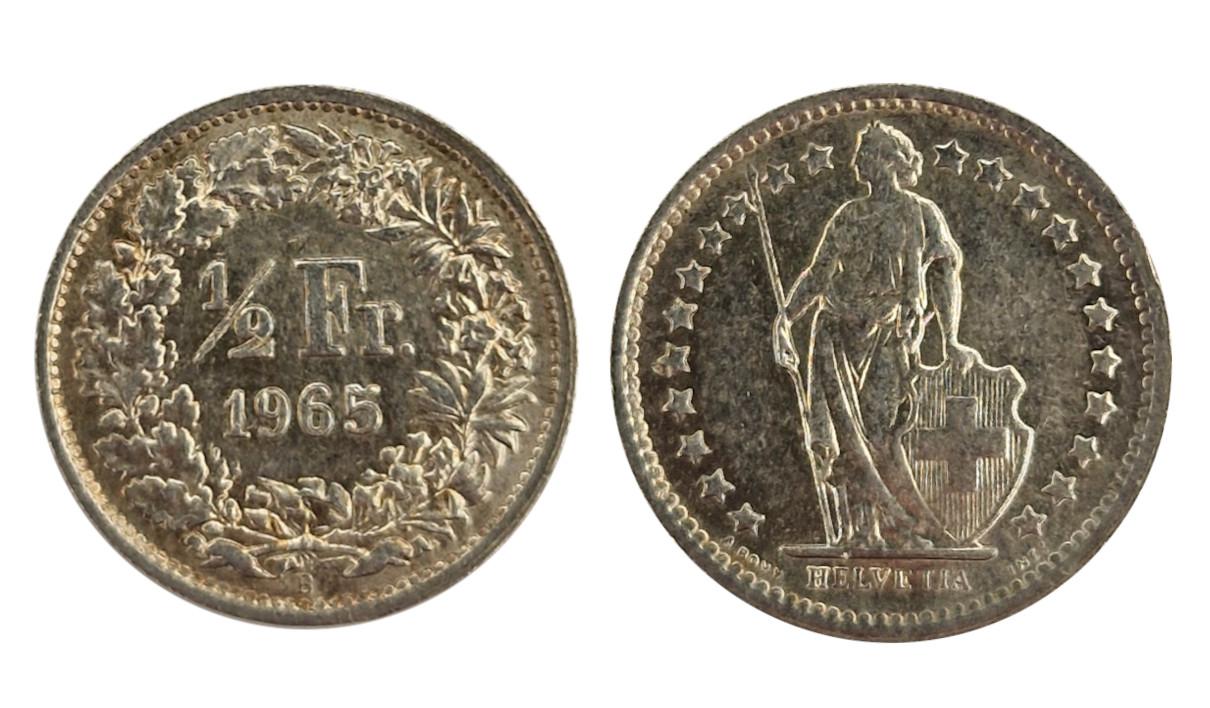Note: PreMeSec provides the metal value based on the market value of the precious metal for informational purposes only. PreMeSec.ch does not trade in precious metals itself. The price data is provided by third-party companies and updated several times an hour. PreMeSec.ch is not liable for the accuracy of the information and does not provide any trading or investment recommendations. Users of the trading platform are free to set their own prices; PreMeSec has no influence on these and accepts no liability.
Summary
The 50 centime coin from 1875 - 1967 looks exactly the same as its successor and is based on the appearance of the larger 1 and 2 franc pieces.
The 50 centime silver coin is out of circulation, but since it looks exactly the same as its successor, it is still sometimes found in circulation.
The 50 centime coin from 1875 - 1967 is popular with silver buyers.
Introduction to the 50 centime silver coin from 1875
The appearance of the 50 centime coin remained unchanged from 1875 until the abolition of silver coins in 1969 and was even transferred to the successor coin. Switzerland, which had become a founding member of the Latin Monetary Union in 1865, issued this ½ franc silver coin according to the specifications of the Monetary Union. The alloy therefore consists of 835/1000 silver, with a weight of 2.5 g, resulting in a fine weight of 2.0875 grams.
The appearance of the 50 centime silver coin from 1875 onwards
The Bernese Albert Walch designed the coin. The appearance of the 50 centime piece is very similar to the larger 1 and 2 franc pieces.
The obverse shows the value 1/2 FR below the year of manufacture. This is framed by a wreath consisting of oak leaves on the left and alpine roses on the right. Between the wreath and the rim there is a B at the bottom, which stands for Bern, where the federal mint was located.
The reverse shows a standing Helvetia with the name HELVETIA underneath. The figure is surrounded by 22 stars, one for each canton.
The appearance is thus largely identical to that of the 1 and 2 franc coins.
This appearance was also adopted for the successor coin made of a nickel-copper alloy. Only in 1983 was another star added for the canton of Jura.
Latin Monetary Union and off-course setting
France, Switzerland, Belgium and Italy created the Latin Monetary Union in 1865 under French leadership. The member states agreed on a uniform monetary system. Since the value of the currency was then contained in the coins as metal, the coins could be exchanged 1:1. Nevertheless, each country kept its own currency and its own coins. Paper money was not used by these countries at that time. A monetary unit was defined as 4.5 grams of silver, but the 50 centime coins were fixed at the weight of 2.0875 grams of silver. As a result, the value of the coins was not fully covered by the precious metal, thus it was a divisional coin. The value of larger coins such as 5, 10 and 20 francs were fully covered by the precious metal they contained, which made them curant coins. After the Latin Monetary Union broke up in 1926, the coins were still produced until 1967, when they were withdrawn from circulation and replaced by nickel-copper alloyed coins in 1971.
The silver coin 50 centimes 1875-1967 as a silver investment
The high silver content (835/1000) and the status as a former means of payment make this coin popular with silver buyers. There are still some coins in circulation today, but you can also buy them in larger quantities from coin dealers. The price is close to the price of silver, making it an alternative to modern silver coins such as the silver Krugerrand, silver Philharmonic or silver Maple Leaf, etc.
Frequently asked questions about the 50 centime silver coin from 1875 onwards
How much is a one franc silver coin worth?
The value can be seen as the nominal value at which the Swiss National Bank would exchange it, or the value of the processed silver. Because of inflation, the silver value of the silver in a 50-centime coin today exceeds the value of 50 centimes and is around 1 to 1.50 francs.
The silver value is calculated as follows: Silver price per kg / 1000 * 2.0875.
Where can I get money for my one-franc silver coin?
You can either sell silver coins at a scrap silver buyer or, even better, you can sell them directly to another private person via premesec.ch.
How do I find 50 centime silver coins in circulation?
Since the 50 centime silver coins look the same as their copper-nickel successors, they are still sometimes in circulation. If a vending machine refuses to accept a coin, it could be a silver coin. A look at the year of minting provides clarity. All fifty centime pieces minted before 1968 are made of silver.
Technical data
Similar products





